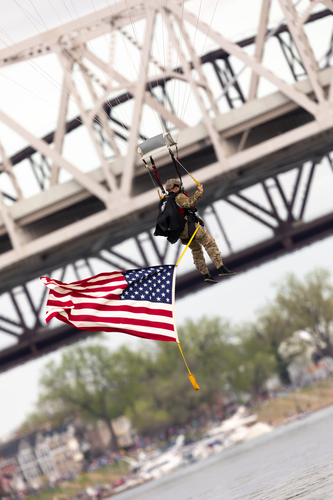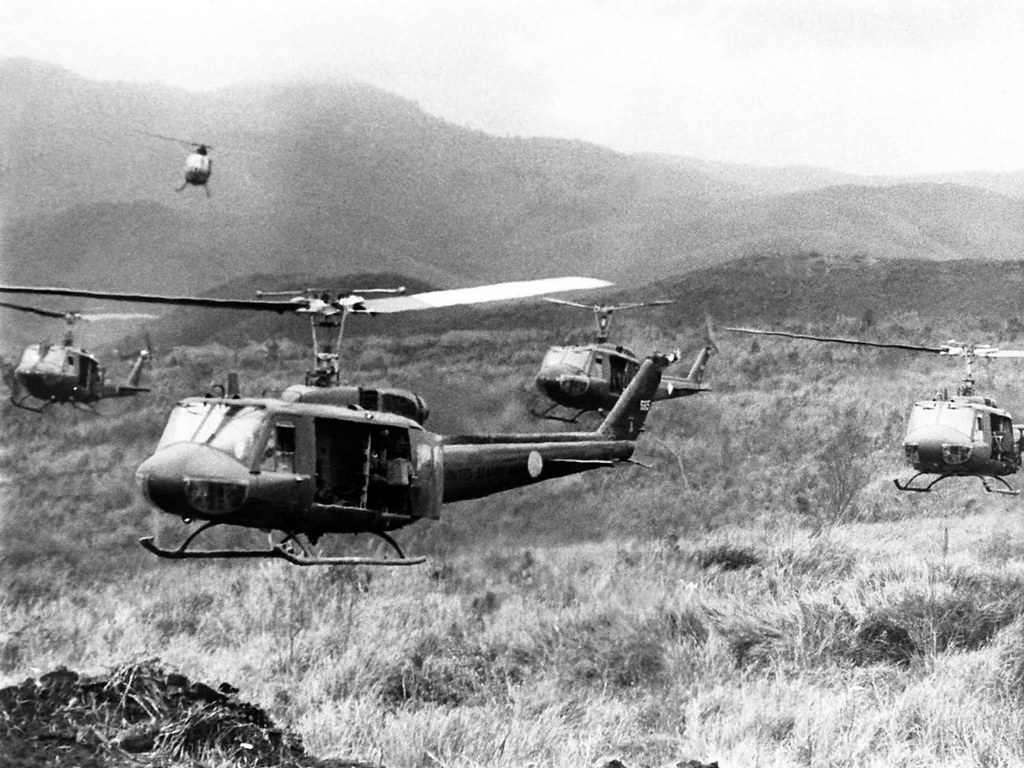
Imagine the sky filled with parachutes as over 3,400 elite American paratroopers descended upon the battlefield during the Korean War. The date was March 23, 1951, and the mission was Operation Tomahawk—a bold and massive airborne assault designed to disrupt enemy movement and break the deadlock that had gripped the conflict.

Fast forward 73 years, and the Rakkasans’ bravery is still heralded, setting a precedent for the courageous jumps executed by the revered Green Berets and the legacy of valor that infuses American military history.

Operation Tomahawk’s planning faced a plethora of challenges. The absence of modern communications, unpredictable weather, and rugged terrain did not deter General Matthew Ridgway’s Eighth US Army, nor the 187th Airborne Regimental Combat Team from undertaking this high-stakes mission. The operation’s success hinged on a surprise element as the troops hoped for clear skies to ensure their safe landing in hostile territory.

On the morning of the operation, a fleet of C-119 Flying Boxcars and C-46 Commandos took to the skies, rupturing the tense silence with their engines’ roar. As the troops approached their destination, intense enemy anti-aircraft fire greeted them. Despite the peril, the Rakkasans leapt into the fray.

Many paratroopers found themselves scattered beyond the intended drop zone, even behind enemy lines—a development that could have spelled disaster.

However, the Rakkasans’ resilience shone as groups, led by sergeants and officers, quickly rallied, securing key objectives such as Hill 151 and the Munsan-ni bridge.

Operation Tomahawk, while not devoid of casualties, played a pivotal role in halting the communist advance and showcased the evolving capabilities of airborne forces—most notably, the successful combat drop of 105mm howitzers. The operation’s nuanced success demonstrated the strategic importance of airborne troops in modern warfare.

In a testament to the continuing legacy of American paratroopers, the Green Berets—fighting soldiers from the sky—carry the torch of courage and adaptability today. Their presence alongside Bulgarian and Romanian special operations forces in a recent NATO exercise in Sofia, Bulgaria, underscores their ongoing role in modern conflicts.

The Green Berets’ distinctive mission, requiring intensive language and cultural training, direct action, and counterterrorism, has placed them at the forefront of unconventional warfare across the globe.

Their rigorous training is evident in the recent maneuvers in Bulgaria, reflecting their preparedness for real-world operations. The Green Berets’ lineage traces back to the Office of Special Services during World War II and their classified operations with the Special Operations Group (SOG) in the Vietnam War.

A vital component of their ethos is captured in the words of Staff Sergeant Barry Sadler’s “Ballad of the Green Beret,” immortalizing the bravery and sacrifice of these elite soldiers. It’s this spirit of valor and unity that resonates across generations of American warriors.

Yet, amidst such acts of heroism, the reality of the toll on soldiers’ lives remains a somber undercurrent. The recent tragic suicide of a veteran at the Baltimore VA Hospital serves as a sobering reminder of the struggles faced by those who serve.

It calls for unity and support among veterans, echoing the words of USMC Colonel (Ret) Eric Buer in a heartfelt plea for empathy and solidarity within the community.

Drawing inspiration from historical figures like Theodore Roosevelt, who valued innovative outcomes over rigid specifications, the American military tradition continues to evolve.

Operation Tomahawk remains a powerful narrative within this tapestry, a story of airborne prowess and a poignant reminder of the sacrifices made in the name of freedom and security. It is a legacy of valor that is underrated but never forgotten.

